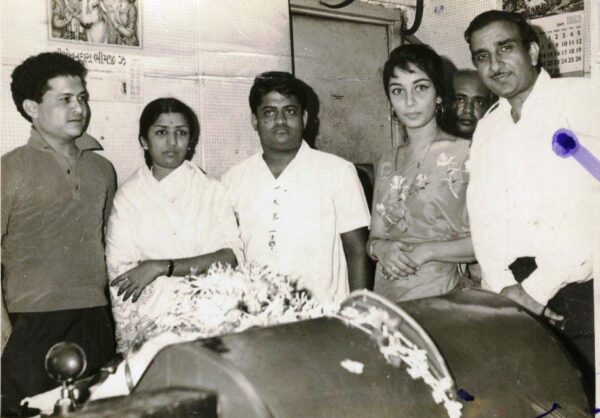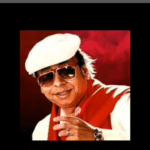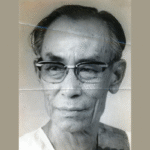May 31, 2025, was Raj Khosla’s birth centenary. On June 9, 1991, this maestro of movie-making passed on, leaving a legacy of assorted great films.
The ace director, who was also a producer, wrote the story of Kucche Dhaage and also was a singer, even vocalizing some portions in some of his films like, for example, Prem Kahani, was a wonderful and grounded human being and one of our greatest and most versatile filmmakers.
At that time, though still emotionally fragile, he had a renewed determination: to come back with a vengeance after six flops in a row! He had planned and was scripting a musical thriller mystery on the lines of his trilogy of Woh Kaun Thi?, Mera Saaya and Anita, boldly admitting that he took full responsibility for his six flops. “I lost my mother and it upset me so much that I did not really pay attention to my work!” he had said candidly then.
As can be seen in his track-record of 20 films before this phase, he had scored high at the box-office with movies like C.I.D., Solva Saal, Kala Pani, Ek Musafir Ek Hasina, Woh Kaun Thi?, Mera Saaya, Do Badan, Do Raaste, Mera Gaon Mera Desh, Kuchhe Dhaage, Main Tulsi Tere Aangan Ki and Dostana, with even the potboiler, Nehle Peh Dehlaa working and critical acclaim coming in for his maiden film as producer, Bambai Ka Babu.
What’s more, come hit (Do Badan) or flop (Anita), Khosla’s films almost always had immortal music, with the strength of the songs lying in their audiovisual value, rather than just as music tracks.
A Khosla movie thus, for me, was a delightful overall experience, emotional, entertaining and with a takeaway of great scripts, performances and songs. Here I present my favorite films among his legacy. Honest Disclaimer: Have not (yet) watched Bambai Ka Babu and Solva Saal.
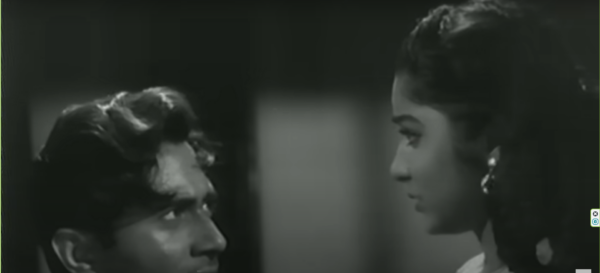
C.I.D. (1956)
This was a film I had heard so much about from childhood, and it had iconic O.P. Nayyar songs galore, like Aankhon hi aankhon mein ishara ho gaya, Leke pehla pehla pyar and Yeh hai Bambai meri jaan. The time to watch this Dev Anand-Shakila film finally came in the late 1990s when the film industry was on a temporary strike and there were no new movies to review! I decided to review old classics after watching them on videocassettes and took on this film as my first.
And what a film it was! A perfect capsule of manoranjan, it had the first top star to start her career in Hindi cinema with a negative role—today’s Phalke laureate Waheeda Rehman—long before Bipasha Basu in Ajnabee. It also had a blink-and-miss role by future comic legend Mehmood as a hired assassin and a superb script.
I later came to know that not only was it the biggest hit of 1956, but also the first Hindi film to gross a lakh when the highest movie tickets must have been costing a rupee or two! Dev and Waheeda later became a hit pair, and producer Guru Dutt went on making films with his protégé Waheeda all the way to a film he was directing, Raaz, when he passed away.
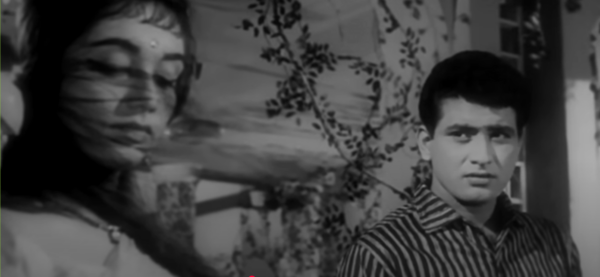
Woh Kaun Thi? (1964)
A classic thriller, this was a film that had truly hair-raising moments for me and Sadhana became a gigantic star after it, despite other early successes. Khosla’s favorite and most-repeated star (along with Asha Parekh), Sadhana w not only did his suspense trilogy but the frothy Ek Musafir Ek Hasina earlier in 1962.
Khosla’s only featured song as a singer was in Madan Mohan’s debut film, Ankhen (1950), and this time, the composer was chosen by producer N.N. Sippy and him. His epic trio of Lata Mangeshkar solos included the peerless litanies, Lag jaa gale and Jo humne dastaan apni sunayi besides Lata’s third haunting ace after Mahal’s aayega aanewala and Madhumati’s Aaja re pardesi: Naina barse. The first and last have been remix or re-creation fodder since.
The screenplay and dialogues were considerably modified and rewritten by Manoj Kumar, the hero, who was not happy with the lines. When he showed them to Khosla, the latter took him to producer N.N. Sippy, stating, “Here is your new writer!” Manoj also told me that while he had a few successes before this film, his real stardom began with Woh Kaun Thi? and Himalay Ki God Mein that came a year later.
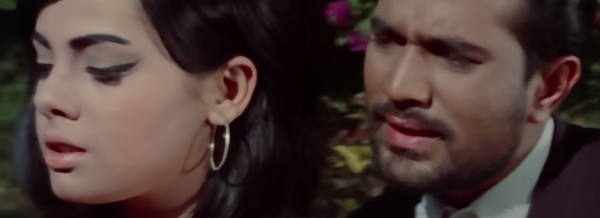
Do Raaste (1969)
This can be called a benchmark among the family dramas genre. It was based on Marathi novelist Chandrakant Kakodkar’s novel, Nilambari. Brilliantly scripted by G.R. Kamat, Khosla’s favorite writer, and with incisive dialogues by Akhtar Romani, it propelled to prominence the Rajesh Khanna-Mumtaz pair, was the first combo also of Rajesh Khanna with Laxmikant-Pyarelal (with whom he actually has given more hit films and songs than with R.D. Burman as hyped, and who did four of Khanna’s unofficial or home productions—Mehboob Ki Mehndi, Roti, Aashiq Hoon Baharon Ka and Chakravyuha).
The all-hit score, led by Bindiya chamkegi, Lata’s cult number that topped the Binaca Geet Mala 1970 (the film was released in December 1969) consolidated Rajesh Khanna’s superstardom after Aradhana a few months earlier, helped on by Doli, Ittefaq and (in some territories) Bandhan (also with Mumtaz).
But Do Raaste is best known for the typhoon-like onset of Bindu as a negative persona—the actual Nilambari of the original story who breaks a family. And when Bindiya chamkegi was filmed on Mumtaz, lyricist Anand Bakshi even told Bindu, ‘I have written this song with you (Bindiya) in mind. Aur tu chamkegi (You will dazzle)!’
Khosla, initially, had wanted to be a singer, and K.L. Saigal was his idol. So the latter’s immortal and yet apt for the situation, Ek bangla bane nyaara, was cleverly used as a song heard by the family head, Balraj Sahni, on a gramophone, at different stages.
After this film, distributors began demanding the presence of Prem Chopra (Bindu’s husband) and Bindu as a negative pairing, even becoming relatively indifferent to the lead pair!! The opening was lukewarm, but the film finally ran for over 100 weeks!
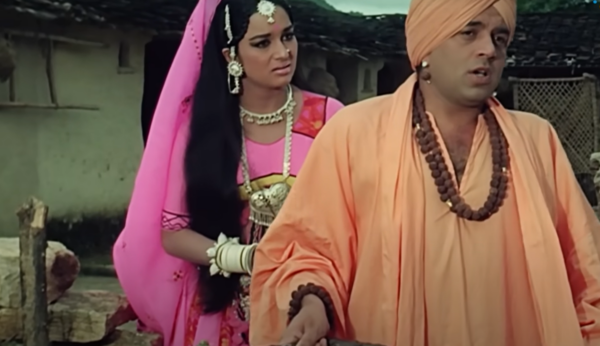
Mera Gaon Mera Desh (1971)
The trendsetting dacoit drama was Khosla’s take on Mahatma Gandhi’s dictum, “If I have to choose between cowardice and violence, I will choose violence.” Again scripted by G.R. Kamat, it had Akhtar Romani excelled in the chiseled and compact dialogues again.
The movie had smash-hit music again by L-P and Anand Bakshi, topped by the iconic Maar diya jaaye ke chhod diya jaaye. Lata sang all five songs here, one of which was duet with Mohammed Rafi.
This was also the year when Asha Parekh was overshadowed by a character artiste and her role and performance twice, both in films of pet directors: Nasir Husain’s Caravan was the other movie.
Dharmendra, in my book, Dharmendra: Not Just A He-Man, and elsewhere, has finally put the record straight by stating that his Sholay was clearly as much inspired by this film as well as by The Seven Samurai and The Magnificent Seven. The villain (Vinod Khanna)’s name here was Jabbar Singh, there was a coin used to take crucial decisions, and Dharmendra was once again a small-time criminal. And though with a difference, there was even a climax song dramatically positioned in the dacoit’s den! This time, instead of a decapacitated police officer, there was an ex-Army man (Jayant) who had lost a leg in war inspiring the hero to fight against the dacoits. Lata Mangeshkar, lyricist Anand Bakshi and art director Ram Yedekar were in common besides Dharmendra.
And what’s more: Jayant happens to be the real-life father of Amjad Khan, who played Gabbar Singh in Sholay!
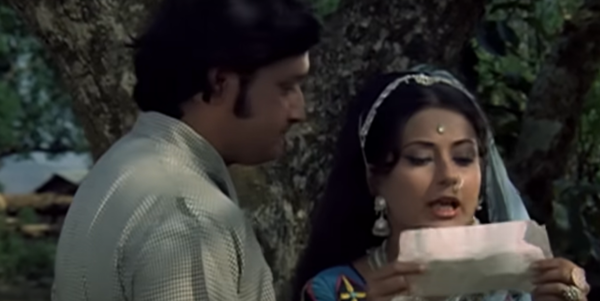
Kuchhe Dhaage (1973)
The most emotionally-charged of Hindi dacoit films (and I have watched almost all the A-grade movies in this genre), Kuchhe Dhaage remains a deep personal favorite as the film did not do blockbuster business but was merely a moderate success. I consider this film ahead of its time, as it told a gentle story of how a village girl (Moushumi Chatterjee) reforms two dacoits (Vinod Khanna and Kabir Bedi) and makes them realize the utter futility of violence and vendetta apart from their crimes.
Again written by Kamat and Romani, this time from Khosla’s own story, the film was an emotional masterpiece and also the first signed Hindi film of Moushumi Chatterjee. It co-starred her with husband Jayant (screen name Ritesh, son of composer-singer-filmmaker Hemant Kumar).
The music (LP-Anand Bakshi) was a delight. Lata again sang all the songs, one a duet with Hemlata.
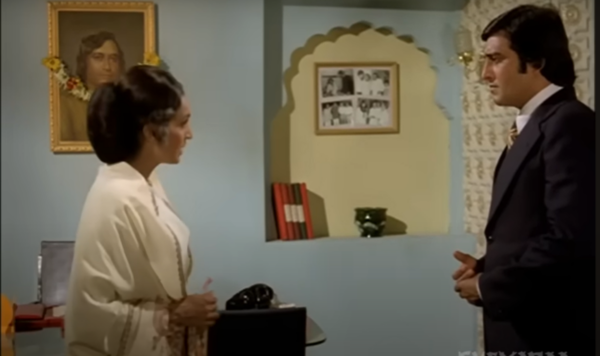
Main Tulsi Tere Aangan Ki (1978)
This allegorical film was again based on a Kakodkar novel. Nutan and Asha Parekh were both in love with Vijay Anand, and Vinod Khanna was the latter’s son through Anand. Nutan was Anand’s wife, Asha the ‘Tulsi’ in the compound of their home (hearts), who never disrupted the bond between the couple. By a twist, Nutan’s son (Deb Mukherjee) was shown as wayward.
The film was a hit and is also remembered for three songs: the perennial title-song classic by Lata, Rafi’s popular Yeh khidki jo band rehti hai and arguably the best version ever heard of the Ameer Khusrau classic, Chhap tilak sab chhini sung by Lata with Asha Bhosle.
(Used under special arrangement with NIT)


